What could an ideal unit of measurement for Human Facial Features? The Facial Features largely vary with gender, age, genetic and climate. A careful observation of human skull can give the following insights.
- The least changed shape in human skull is eye socket (anatomically known as ‘Orbit’).
- The least changed dimension is the interocular distance.
- Jaw is in its peak shape during the most reproductive age. This is also the most changing shape on face.
- The face-width has less variation over age, in comparison to face-height.
Considering the above observations, Interocular distance is a good candidate for unit of measurement for structural analysis of face.
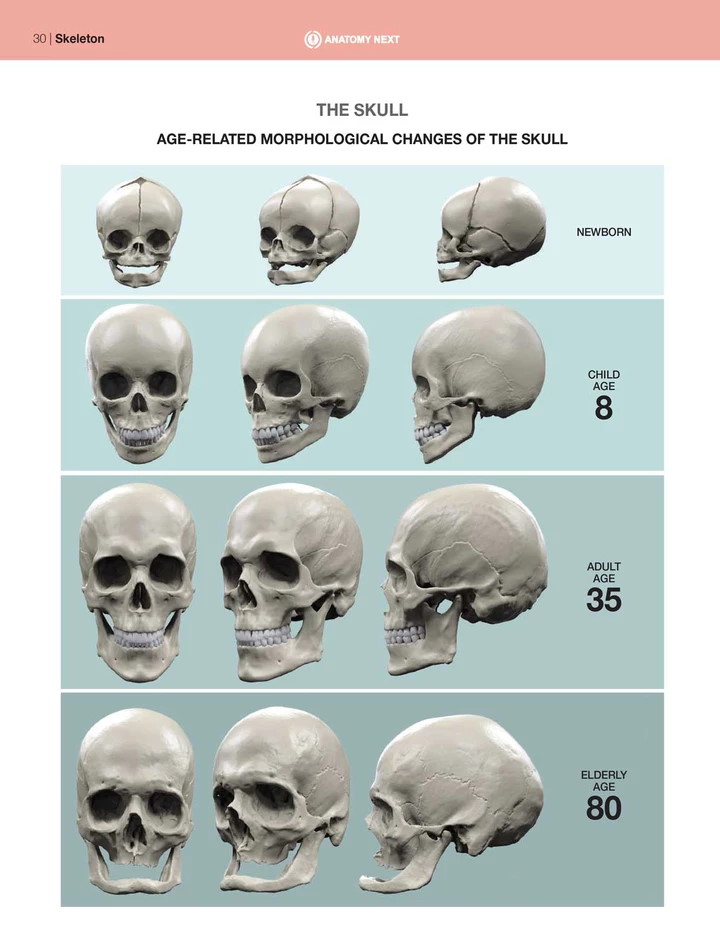
Even though Interocular distance is a good candidate, is there any possibility of large variation of its measurements over gender, age, genetic and climate? The interocular distance can be further break down into ‘outer canthal distance’ , ‘interpupillary distance’ and ‘inner canthal distance’
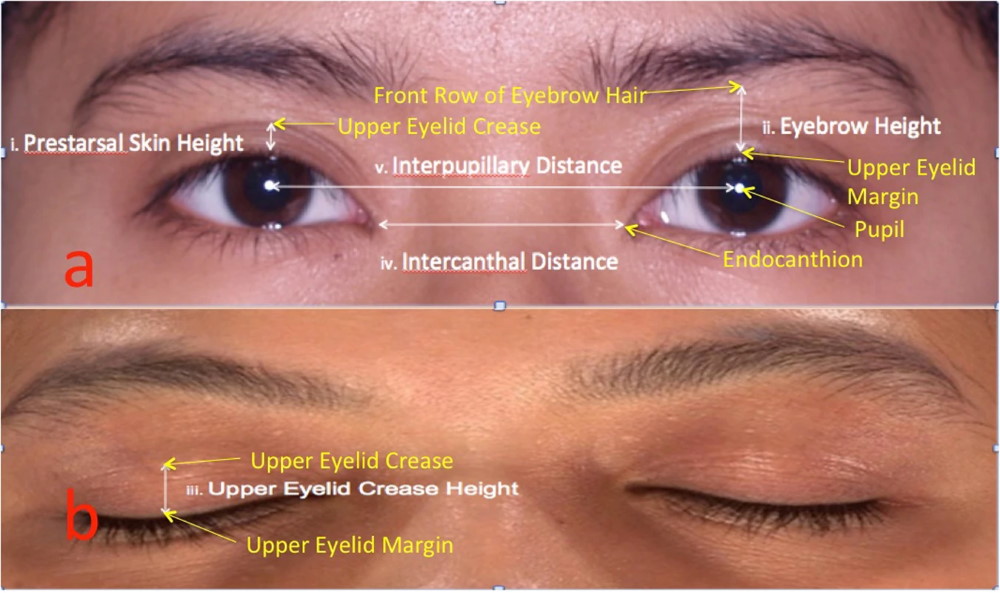
The below figure shows that, inter canthal distance is one feature which has less change over the years of age progression.
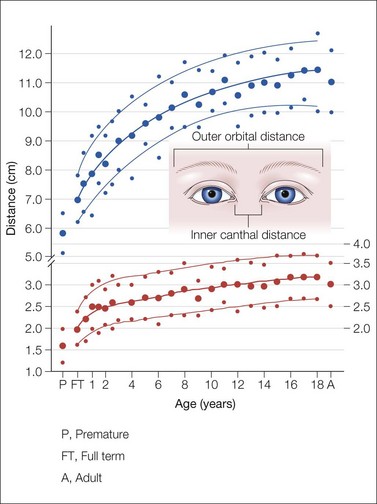
The InterPupillary Distance is one feature that has no significant difference between males and females. The average InterPupillary Distance for males and females across different ethnicity is around 64mm.
IPD = InterPupillary Distance/64 is the standard used for measuring facial features from an image at PinkMirror Facial Aesthetics Studio.
The IPD is also subjected to photographic distortions. https://www.researchgate.net/publication/249562845_The_Non-Realistic_Nature_of_Photography_Further_Reasons_Why_Turner_Was_Wrong. Hence the selection of photographic equipment needed to be carefully considered.
Abnormal Inter Canthal Distances
For a well formed facial structure, the inter canthal distance is correlated with width of eye. If there is an imbalance in inter canthal distance, it can cause ‘Telecanthus’ or ‘Orbital hypertelorism’
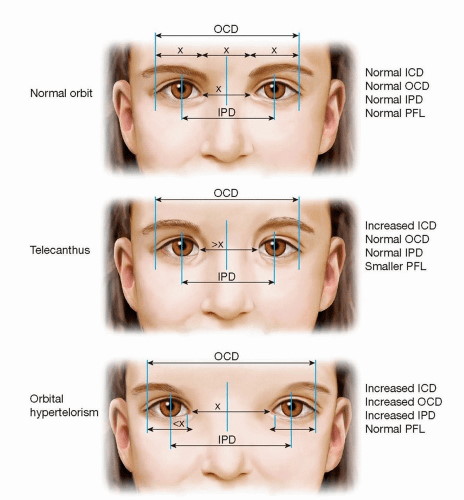
Distinctive face features of a child with Fetal Alcohol Syndrome who have brain damage and resulted low intelligence.
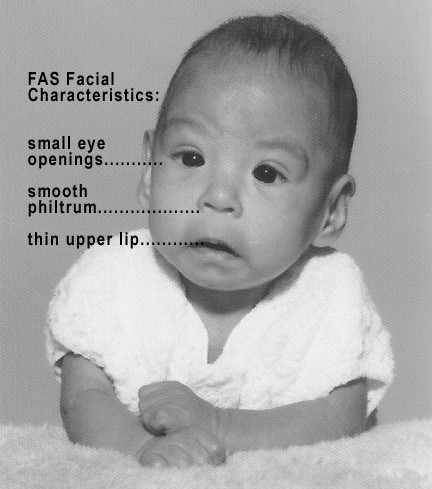
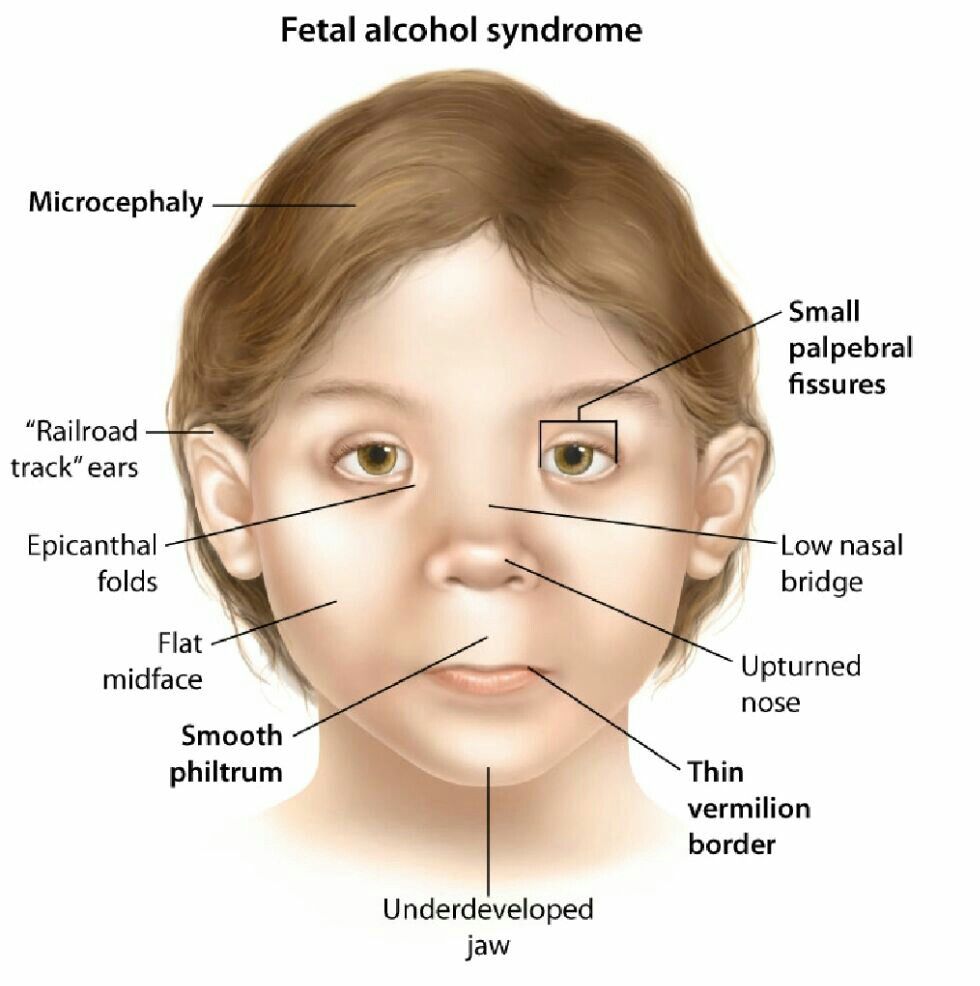
The genetical deformity of orbital area can be further studied in the below link.
https://onlinelibrary.wiley.com/doi/10.1002/ajmg.a.32597
Word of Caution
This a study based on external sources. This is neither final nor an official one. Please use the information presented here at your discretion.
4 replies on “Human Face and unit of measurement”
Hi my name is Dave I dont agree with my results or sylvester mccoys or richard hurndalls as we only got 4 out of 10 scores due to our close set eye distance
27 in December here
Hi i am 58 .
I hope this is okay I’m going to post my measurements and maybe you can analyze them I will also post a picture.
# Face structure analysis:
Pan Angle: 0.29167053
Roll Angle: -3.2929
Tilt Angle: -10.168878
Face elements coordinates:
Left eye: x = 343.41, y = 543.56, z = 0.0
Right eye: x = 499.24, y = 536.89, z = 0.77
Left of left eyebrow: x = 292.18, y = 502.97, z = 7.27
Right of left eyebrow: x = 381.41, y = 509.36, z = -33.55
Left of right eyebrow: x = 455.2, y = 508.52, z = -33.06
Right of right eyebrow: x = 549.72, y = 493.2, z = 8.2
Midpoint between eyes: x = 420.7, y = 541.38, z = -30.23
Nose tip: x = 430.5, y = 631.69, z = -58.53
Upper lip: x = 431.58, y = 687.33, z = -16.48
Lower lip: x = 435.19, y = 731.25, z = 1.37
Mouth left: x = 376.47, y = 703.84, z = 24.74
Mouth right: x = 492.84, y = 699.35, z = 25.55
Mouth center: x = 432.78, y = 706.01, z = -2.27
Nose bottom right: x = 469.67, y = 645.25, z = -2.64
Nose bottom left: x = 391.52, y = 645.29, z = -2.55
Nose bottom center: x = 430.62, y = 656.95, z = -22.05
Left eye top boundary: x = 340.95, y = 527.52, z = -10.6
Left eye right corner: x = 373.98, y = 549.38, z = 0.76
Left eye bottom boundary: x = 340.63, y = 555.53, z = 0.2
Left eye left corner: x = 312.44, y = 540.55, z = 13.17
Right eye top boundary: x = 499.42, y = 520.85, z = -9.82
Right eye right corner: x = 528.81, y = 533.71, z = 14.26
Right eye bottom boundary: x = 501.22, y = 549.75, z = 1.14
Right eye left corner: x = 466.17, y = 544.95, z = 1.19
Left eyebrow upper midpoint: x = 334.73, y = 491.92, z = -24.77
Right eyebrow upper midpoint: x = 501.97, y = 487.03, z = -23.89
Left ear tragus: x = 240.77, y = 554.47, z = 188.77
Right ear tragus: x = 591.84, y = 564.8, z = 190.87
Forehead glabella: x = 418.98, y = 509.8, z = -38.46
Chin gnation: x = 438.15, y = 789.47, z = 33.13
Chin left gonion: x = 308.32, y = 697.91, z = 151.71
Left of left eyebrow: x = 559.3, y = 691.87, z = 152.35
LEFT CHEEK CENTER: x = 324.44, y = 638.84, z = 29.37
RIGHT CHEEK CENTER: x = 532.45, y = 632.03, z = 30.49
# Detection quality statistics:
Detection confidence: 85.7%
Landmarking confidence: 61.73%